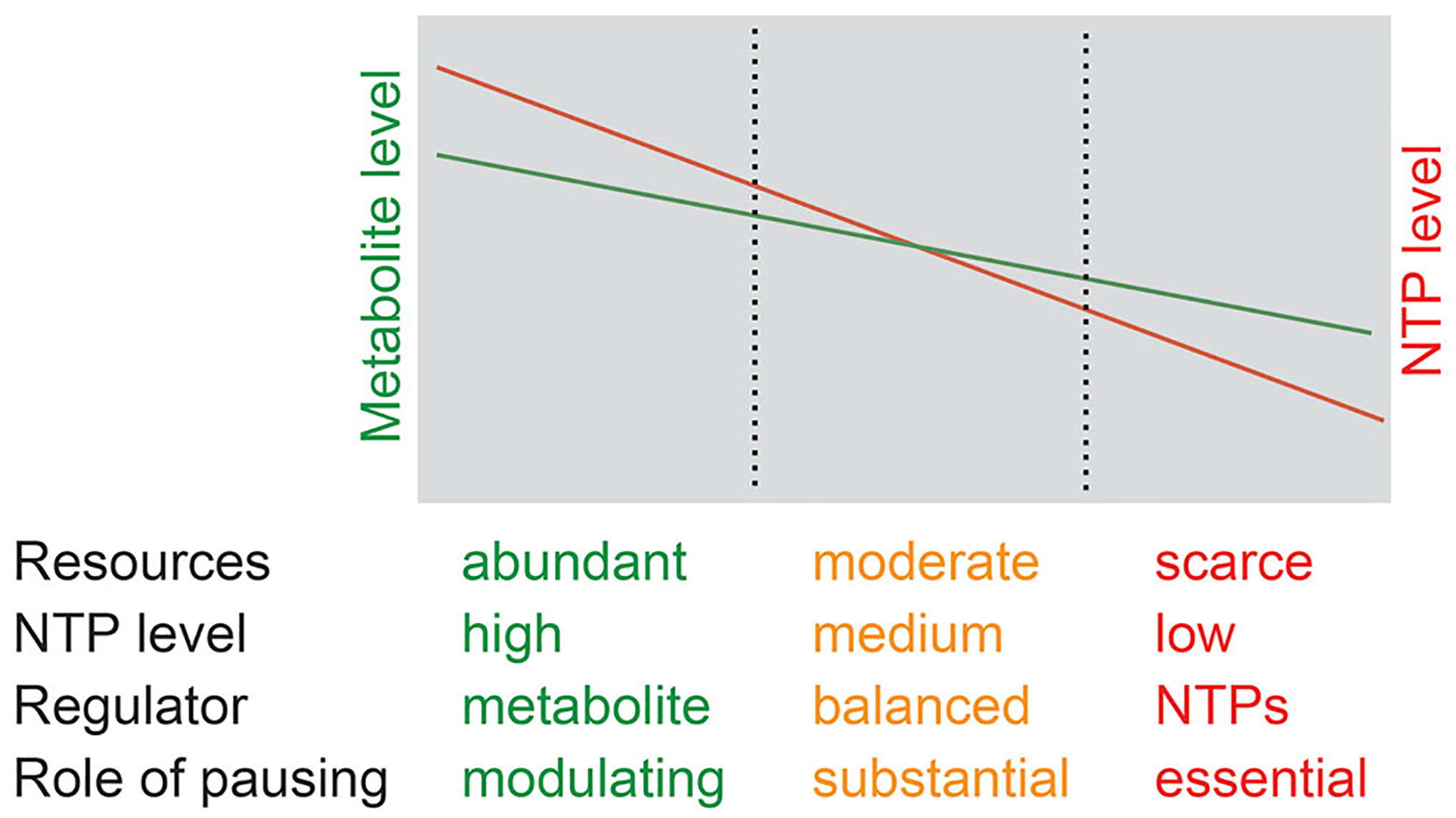Figure 6.

Model of pause sites as NTP sensors that integrate inputs from a pathway-specific metabolite and pathway-independent availability of energy. Exponentially growing cells have short pause duration because of high NTP levels, and therefore regulate gene expression in response to the availability of specific metabolites (shown in green). Resource-limited cells have intermediate NTP levels and pause duration regulates gene expression by balancing the need for metabolites with the availability of energy required for metabolite production (shown in yellow). Stressed cells have low NTP levels, long pause duration, and regulate gene expression primarily via their response to the availability of energy (shown in red). Cells may not be able to grow under extreme energy stress conditions.
